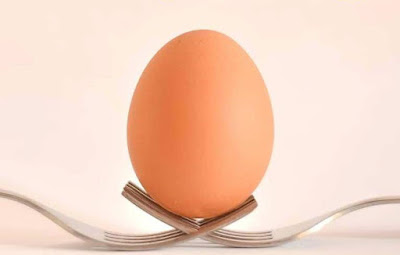PRESERVATION OF EGGS
The Objective of the preservation of eggs to know the various strategies for safeguarding eggs. It is for improving the keeping nature of this transitory nourishment thing. The best way to the preservation of eggs is elucidated below.
 |
| Egg preservation |
Methodology
There are different methodologies for the preservation of eggs, and in like manner the prerequisites are unique. So necessities are referenced while explaining the singular technique.
(A) HOME Conservation
Home preservation of eggs is applied for the small number of eggs. This methodology has been practicing in the countryside area. basically, people who live in the village has been domesticated small number of chicken, duck, pigeon and producing few numbers of eggs. There are some home preservation of eggs methods are-
1. Using Earthen Pot
The rule of this strategy is to keep the eggs in lower temperatures. The eggs can be kept in an earthen pot installed in soil having a sand bed, which is sprinkled with water. This technique is being utilized in the rustic zones to safeguard the eggs in a modest number for hardly any days.
2. Immersion in fluids
Different fluids like lime water, water glass and so forth are utilized to protect the eggs for a brief period.
a) Lime water strategy
One kilogram of fast lime is taken in a pot and 1 liter of bubbling water is added to it. The blend is brought to room temperature, and 4-5 liters of cold water and 225g of basic salt (NaCl) are added to it. Subsequent to settling down the arrangement is stressed through a fabric. The eggs are submerged in this unmistakable fluid and kept for 16-18 hours. At that point, the eggs are taken out and dried in the room. Eggs can be saved for 3 a month by this strategy.
The additive impact of the lime water is somewhat because of its alkalinity. Other than this, it stores a dainty film of calcium carbonate on the eggshell prompting fixing of the pores.
b)Water glass strategy
In this technique, sodium silicate is utilized rather than lime water. Sodium silicate is otherwise called water glass, so the name of this technique is a water glass strategy. An answer is set up by dissolving 1 part of sodium silicate in 10 parts of water. The eggs are submerged in this answer overnight. The eggs can be saved for around one month by this technique.
In this technique, a slim film of silica (sand) is stored on the eggshell prompting fixing of the pores.
c) Oil covering strategy
Mineral oil (nourishment grade, and vapid, scentless, less thick and free from fluorescent materials) is showered over the eggs or eggs are plunged in this oil, which structures a slender film on the outside of the shell prompting fixing of the pores. The eggs are to be treated as right on time as conceivable in the wake of laying to hold better inside quality.
d) The low-temperature technique (eggs in the cooler)
Barely any quantities of eggs can be saved by keeping them in a cooler for few days for home utilization reasons. Yet, in this strategy eggs ought not to be kept for over 10 days.
(B) Business PRESERVATION
Business PRESERVATION of eggs method is applied for a large number of commercial eggs. It is applicable for poultry breeders and hatchery owners. It takes a huge investment due to intensive care of hatching eggs and marketing demands. This method discuss shortly-
1. Cold stockpiling strategy
New eggs are to be put away in this technique. Keeping period will be more if eggs are oil-covered before load in the harsh elements store. The temperature and relative dampness which is to be kept up exposed to the harsh elements store is as per the following:
For transient conservation For long haul safeguarding Temperature: 12.5 – 15.5°e (55-60°F) Temperature: – 10°C (14 ± 1°F) Relative stickiness: 70-80% Relative moistness: 80-90% Oil covered eggs can be safeguarded for 8 months when put away at 14°C and RH 90%, though for a half year in particular if eggs are not covered with oil.
2. Thermo adjustment strategy
Eggs are to be drenched in warm water at 54°C for 15 minutes or 56°C for 10 minutes or 60°C for 5 minutes. This warming procedure balances out the thick segment of egg whites which decreases the vanishing of dampness from inside pieces of eggs, and such eggs hold their crisp appearance for a longer period.
3. Pasteurization strategy
The eggs are to be drenched in warm water at 63°C for 2.5 minutes or 64°C for 1.5 – 2 minutes. This decimates the microorganisms present or.. the outside of the eggs. This procedure is known as the sanitization of eggs.
Tags:
Poultry
